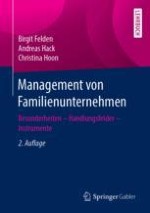2019 | OriginalPaper | Buchkapitel
3. Ressourcen von Familienunternehmen
verfasst von : Birgit Felden, Andreas Hack, Christina Hoon
Erschienen in: Management von Familienunternehmen
Verlag: Springer Fachmedien Wiesbaden
Aktivieren Sie unsere intelligente Suche, um passende Fachinhalte oder Patente zu finden.
Wählen Sie Textabschnitte aus um mit Künstlicher Intelligenz passenden Patente zu finden. powered by
Markieren Sie Textabschnitte, um KI-gestützt weitere passende Inhalte zu finden. powered by
